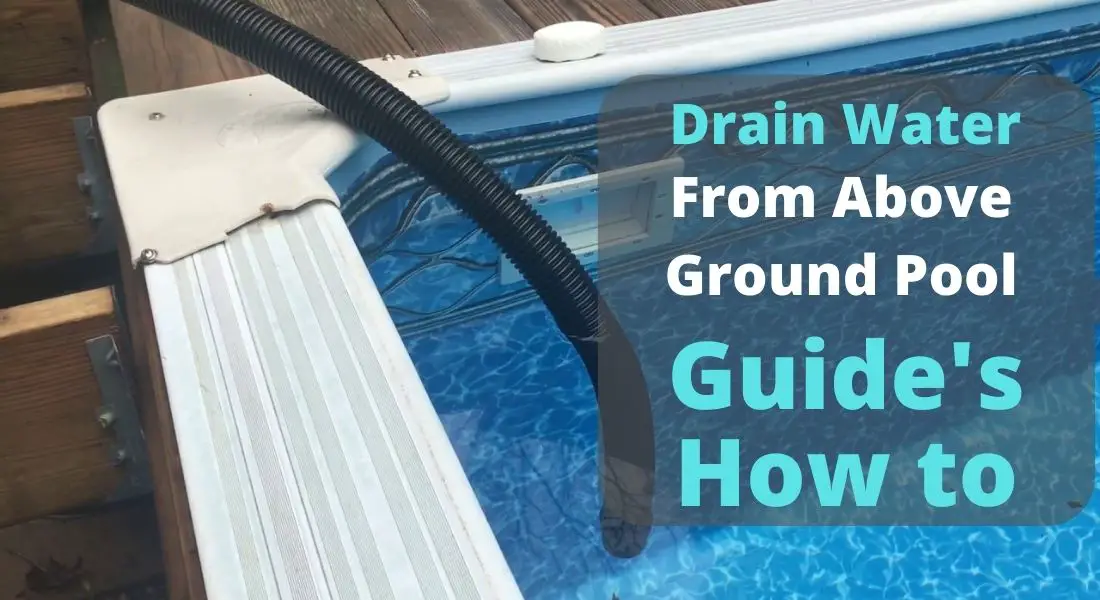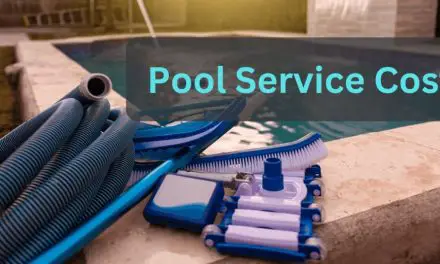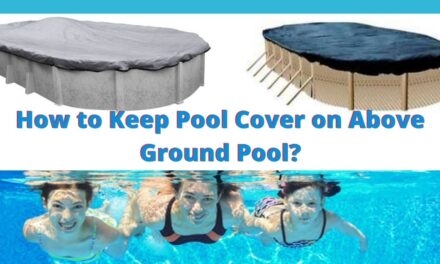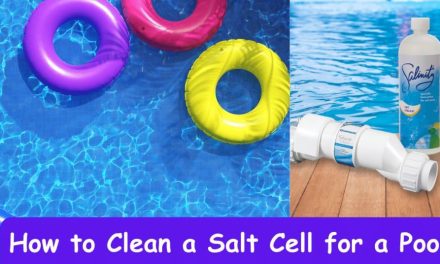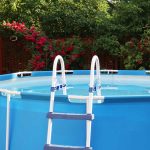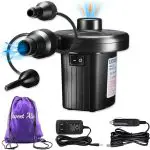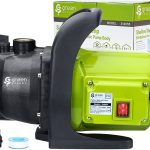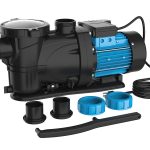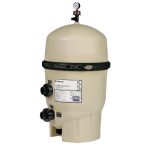This article is for you if you are interested in learning how to drain water from above ground pool. We want to make this write-up as comprehensive and practical as much as possible.
It is no news that nobody likes swimming in a dirty pool. This is why you need to learn how to maintain your pool, whether it is an in-ground pool or an aboveground pool. The steps you learn in this article will teach you how to drain water for pool cleaning and maintenance.
With a floating chlorinator, your pool should remain clean. This means that you rarely need to change the water in your pool. However, there are instances where draining water from your pool becomes inevitable.
How to drain water from above ground pool?
To maintain your pool, you need to know how to drain water from it. You rarely need to change the water in your pool. However, it is necessary to learn how to do it so that it will not pose a problem when the need arises.
Draining and replacing your pool water is important to maintain clean, healthy swimming conditions. Whether you’re dealing with cloudy water or a chemical imbalance, draining your above-ground pool is a process that should be done once per season or as often as needed. In this article, we’ll cover the steps necessary to drain and replace your above-ground pool water safely and efficiently.
1. Safety First:
Before beginning any maintenance on an above ground pool, it’s important to take safety precautions. Before doing anything else, make sure to read the manufacturer’s instructions for the specific model of pool you are working on and keep all safety equipment nearby in case of emergency.
2. Gather Supplies:
In order to start draining your above-ground pool, you’ll need some supplies:
- Garden hose
- Submersible pump or sump pump
- Towel or mop for mopping up spills
- Pool cover (if applicable)
3. Unplug the Pump and Filter System:
Before beginning the draining process, make sure that the power source to your pool pump and filter system is unplugged. This will ensure that there are no electrical hazards while you’re working on the pool. If you have a skimmer in place, you may want to shut off the water supply line to it as well.
4. Attach Garden Hose:
Attach one end of your garden hose to the pool’s drain outlet and the other end to an outside source such as a storm drain or sewer system. Make sure that the hose is securely attached and not leaking anywhere. Turn on the water at the outside source and let it fill up the hose until it starts draining out of the bottom.
5. Attach Submersible Pump (Optional):
If you have a submersible pump, attach it to another garden hose and then connect this second hose to your existing one. Connect both ends of this new hose to two different sources – one at each end – so that water will be pumped from one side to the other in order to expedite the draining process.
6. Open Pool Skimmer, If Applicable:
If your pool has a built-in skimmer, open the valve on it and make sure that the water is draining from the skimmer as well. This will help speed up the process. Make sure to keep an eye on the level of water in the pool during this step as you don’t want to risk over-draining it and damaging any other components.
7. Mop Up Spills and Check for Leaks:
As soon as you notice any signs of leakage or spills, take care of them right away so that you can avoid any further damage. Use a towel or mop to soak up any excess water and check all fittings thoroughly for signs of wear or leaking.
8. Replace Pool Cover (If Applicable):
Once you have finished draining the pool, replace the cover if applicable. This will help protect it from dirt, debris, and other contaminants while not in use. Make sure that the cover is securely attached in order to ensure that it won’t blow away when not in use.
9. Fill Up the Pool With Fresh Water:
Now comes the fun part – filling your pool back up with fresh water! You can either fill it up with a garden hose or purchase premade pool water such as chlorine or bromine tablets for convenience. Once filled, run your filter and pump for at least one hour before allowing anyone to swim in the freshly drained pool.
Draining and replacing your above-ground pool water is an important part of regular maintenance that should be done at least once a season or as often as needed. Following these steps will help keep your pool clean, safe, and inviting for everyone to enjoy!
Advantages of above-ground pools:
As a pool lover, choosing an above ground pool has some benefits over an in-ground pool. Some of these advantages are right below:
1. Cost-effectiveness:
The first advantage of an above ground pool is that it’s cheaper than an in-ground pool. Making an aboveground pool is a wise decision for families who have a budget.
This option is more affordable than the in-ground swimming pool. Also, money for construction materials is eliminated when you choose the aboveground pool.
2. Time-saving:
Another advantage of an above ground pool is that it is time-saving, as it is quicker and much easier to install. You can even get inflatable above ground pools, which is also cheaper and more convenient to use.
3. Opportunity to do it yourself:
If you are the do-it-yourself kind of person, then it is advisable to go for the aboveground swimming pool as against the in-ground pool. The aboveground pool requires little or no experience at all.
The in-ground, on the other hand, requires skill and experience to set up. Above ground pools come with self-installation kits that will enable you to install them without hassles, even without tools.
4. Maintenance:
Another advantage of an above ground pool is that it is much easier to maintain, unlike the in-ground pool. Once you know to drain the water from the pool, everything else becomes easier.
5. Space:
Another important advantage of having an aboveground pool is that it uses up lesser space than the in-ground pool. If you have a small house or a small space in your backyard, an aboveground pool is a better option. This may not be possible with the in-ground pool as you may need a bigger space for its construction.
6. Safety:
It would be great to know that an aboveground pool offers more safety than an in-ground pool. It is almost impossible for accidental falls to occur with aboveground pools since it is above the ground or higher than the ground.
We hope that you now know how to drain water from an above ground pool. We made you understand that having an aboveground pool has some advantages. And you also learned that such pools are easy to maintain.
You can acquire a good backyard pool for your kids. It is even more exciting to enjoy summer fun with your family. To catch such fun, you need an aboveground pool. Kids especially love the inflatable pools.

